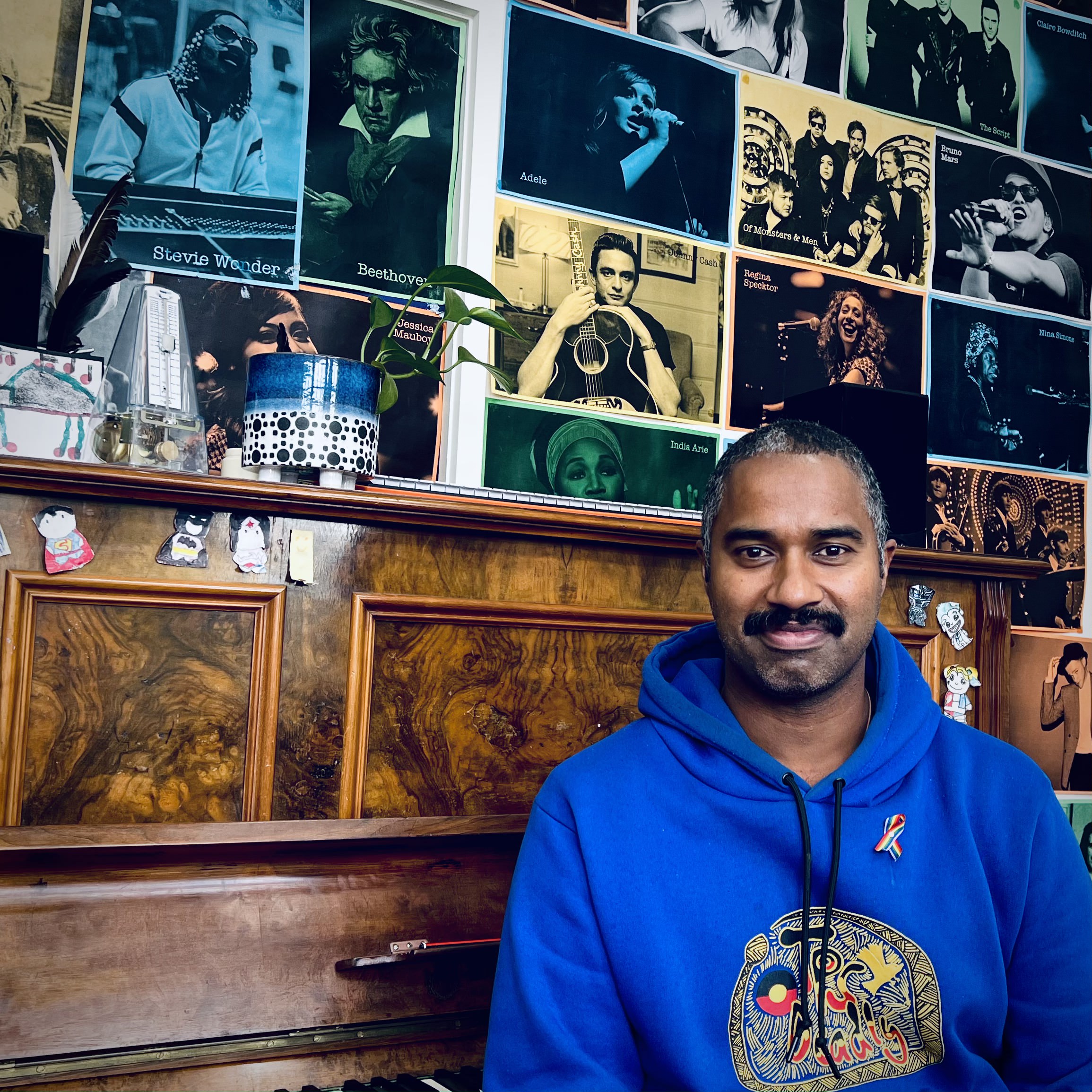We spend a lot of time teaching the dots… lines ___ and spaces , this encompasses the translation of music from paper into sound.
But at times we forget to teach the LISTENING!
Music engages the ears, sometimes following down to the body, legs and arms as we dance or tap away in enjoyment! We hear the music, we feel the music. As a teacher of sound, my question to you is;
Are we dedicating enough time to the very thing we are creating this art for – Hearing & Feeling?
Listening Emotionally!
The feelings from listening come from an emotional reaction to the music. This is created through the note choices, rhythms and expressions. We teach expressions in the playing of music through interpreting musical symbols (f,mf, >,cres). These help to change the feeling of the 12 notes we play, leading to a different emotional reaction from the same note. Intervals and rhythms also have their own emotional value. Larger intervals give us a sense of airy openness and closer intervals create fluidity and tension. Much the same can be said about rhythms of closer notes, this gives us a sense of busyness and urgency, compared to rhythms that are further apart in time.
These concepts may be very clear to understand as an experienced musician/teacher, however I believe we need to speak, listen and explicitly teach this emotional knowledge to our students. Getting students to recognise the effects of these elements emotionally is essential. So how can we do this?
If we were to ask a person to draw an image of “a house on a sunny day”, we would end up with something along the lines of this picture:
The illustrator has a clear understanding of what a house should resemble and what a sunny day represents through colours, shapes and form. These understandings have come from their experience. The artist has seen a house, and likely has drawn a house before, however simplistic or detailed. Our coloured pencils further add to the emotional connection and understanding of the scene.
If we are now asking the musician to compose rather than draw, how do they express this imagery via sound?
We can begin to express the picture inside our head through actively listening when learning, playing or creating music. Active listening is a term often used in education. We can embrace this thinking to help build our emotional musical tool bag (aural vocabulary library), much like if we paint a sunny day we would likely use yellowish colour for the sun, a basic house = square with a triangle above. There are some standard sounds, techniques or expressions that instantly evoke particular emotions/feelings.
LET’S START AT THE VERY BEGINNING
A very good place to start a new piece is with the title. Do we get any feelings from the title? Does the title tell a story itself? Many tunes for early learners have quite descriptive titles, so even without playing a note, we can begin to shape some emotional understanding of the song. Lyrics can also help to clearly show the literal meaning of a song. Melody (pitch and rhythm) are a little bit different to the above, this is where as teachers we need to help the musician understand what’s being presented.
We can break down the melody into small sections, and separate the hands, so parts can be heard on their own. If the teacher plays these parts, allowing the student to engage 100% in the aural component (active listening). We can question how the parts make us feel. As educators, by expressing our ideas about the emotions in sound, we help students identify what they hear and feel in the music. From this foundation we can help nurture the skills to create these sounds for themselves. Starting to develop the musical tool bag, so when it comes time to compose a picture of “a house on a sunny day” we have some tools to draw on.
To help strengthen this musical tool bag, students can explore composition using a given subject as a structured creative activity. As teachers, we can throw simple topics to the students during a lesson (a mouse sneaking out to get some cheese at night), then have the musician create a short composition to represent this scene. Here is a short example of how I’ve explored this composition activity with three student grade levels (Year 2, Year 5 and Year 7). Each student was given the mouse scene above and asked to use any of the 88 keys before them to create this music story. This whole activity took no more than 5 minutes. In this time they; composed the piece, did a simple recording and then we reflected on how they brought the story to life with sound. It’s a quick, enjoyable and easy way to get started! 😀

These creative activities can be as short or as long as you would like them, who knows it may lead down the road of a symphony about animals (around the house)!
In my teaching I’ve found that we all have connections to sound, however sometimes in lessons we are busy dealing with the mechanics of music (technical side) and we forget to actively listen and connect. Our ears are the most important thing in this aural art form. They connect sounds to our emotions, hopefully leading to well-rounded musicians playing with emotional purpose!
Fundamentally, we are painting music for our ears!

Finley Francois
Kii! I’m an active BIPOC musician/songwriter/teacher on Wurundjeri land (Melbourne). As a teacher, I have taught in primary, secondary and tertiary settings. I draw upon my experiences as a musician, and love of learning, to provide my students with a viable musical future and a passion for music. My teaching grounds students in theory and systematic ideas in music; but never forgetting that art is all about creativity and self expression! My love for music stems from electronic to contemporary!
Social link: https://linktr.ee/finleyfrancois
